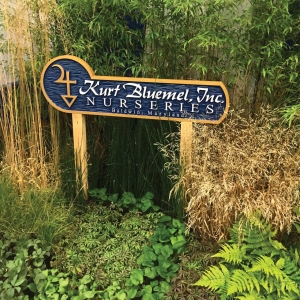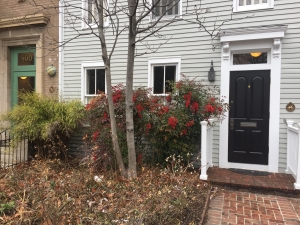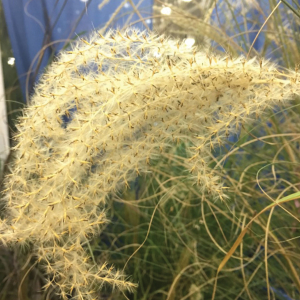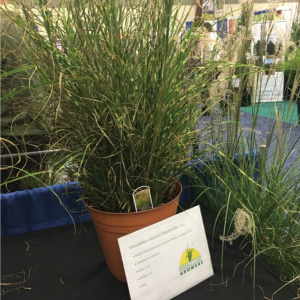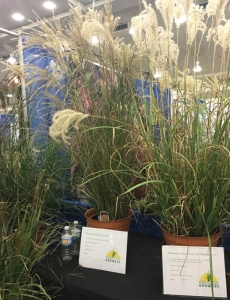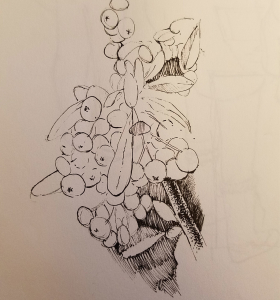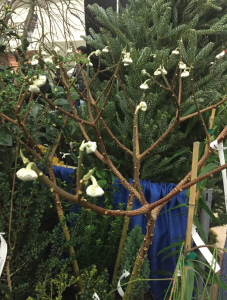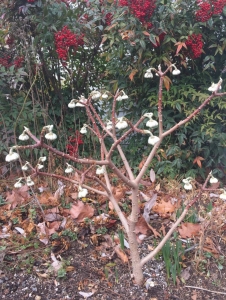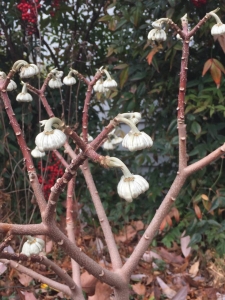OvS Design Staff Share Reflections from MANTS
OvS staff members recently attended the Mid-Atlantic Nurseryman’s Tradeshow (MANTS) in Baltimore. Read on for their reflections.
Benton Williams is an OvS intern from the Louisiana State University where he is an undergraduate in the Robert Reich School of Landscape Architecture.
What did you learn at MANTS?
My experience at MANTS was definitely an eye opener. Being relatively new to the profession of landscape architecture, I think it was very beneficial to me to see just how extensive the plant wholesale industry is. I realize now that landscape architects make up only a small portion of the plant community. The hard work and professional expertise of talented plant growers is key to a landscape architect’s designs becoming a reality. We met a couple of the vendors that have been in partnership with OvS for many years. One in particular was Kurt Bluemel, Inc. Nurseries which has supplied grasses and perennials to OvS for nearly 40 years. The Maryland-based nursery started collaborating with OvS after Pauline Volmer introduced Kurt to Wolfgang during Jim and Wolfgang’s first project at her Baltimore home.
Were there any surprises?
After growing up and studying landscape architecture in Baton Rouge, it was interesting to see how a Louisiana plant palette can overlap with a Maryland plant palette. When I first thought of moving to D.C. I pictured to myself a very ‘cold, northern’ climate and expected to see a very different variety of plants that what is common in south Louisiana. To my surprise, I ended up knowing a lot of the popular plants at the expo and realized that many of the plants that thrive in the river deltas of south Louisiana also do extremely well around the Chesapeake Bay. Many plants I studied, it turns out, have a hardiness zone tolerance from 6-9 which includes both states.
Did you make any plant discoveries?
One plant in particular that I was very surprised to see was Nandina domestica (Heavenly Bamboo). I previously thought of this plant to have a particular southern Louisiana suburban vernacular design quality. To my avail, not only does it do well in the Chesapeake region, but it is also a common plant used in OvS designs. Since I saw this specimen at MANTS, I have started to notice it all over the place including right next to the OvS office entrance I use daily.
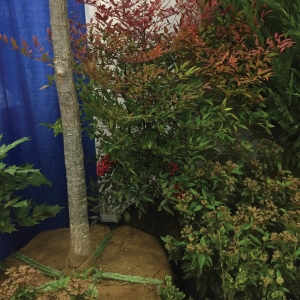
Nandina domestica (Heavenly Bamboo)
Yoyo Li is a member of the OvS Design Staff. She is a team member on the project on the Friendship Garden in Washington, DC.
What was your favorite plant at MANTS:
I liked Miscanthus sinensis (My Fair Maiden), a new Miscanthus sinensis grass. It has upright vase-shaped form with a dramatic size. I was really impressed by the fluffy, showy inflorescences. It looks like cotton or clouds that glitter in the sun. What is more important is that My Fair Maiden is highly infertile. You don’t need to worry about spreading via seed. It covers Zone 5-10 and grows to a height of up to 6’, up to 9’ in bloom. It requires a lot of sun and is low maintenance. My Fair Maiden is suitable for mass planting and border. Other Miscanthus grasses, Miscanthus sinensis (Scout) and Miscanthus sinensis (Bandwidth) were also on display at MANTS. Scout is slightly shorter than My Fair Maiden and has slender green blades with white midrib. Bandwidth is only 2’-3’ high. It has bright gold bands span rich green blades. All three new Miscanthus sinensis grasses are infertile and can add some interesting character to your garden.
Jung Lee is a member of the OvS Design Staff. He was on the team for the Tippet Rise Arts Center in Fishtail, Montana.
Did you discover any new plants at MANTS?
Yes, at the Kurt Bluemel Nursery booth I saw Pyracantha koidzumii (Victory Pyracantha) for the first time. I like the shrub’s dense rounded shaped leaves and it’s very bright, intense red berry.
Victory Pyracantha is a thorny evergreen that creates an excellent hedge or screen, and provides both a windbreak or barrier planting. It’s small, white spring flowers produce attractive berries in the fall. You can use this versatile shrub as an espalier against a wall, or leave it free standing to form its own fence. Its dark foliage and bright red berry clusters make a fine addition to a mixed border or wildlife garden.
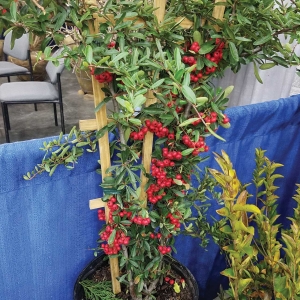
Pyracantha koidzumii (Victory Pyracantha)
Lili Herrera is a member of the OvS Design Staff. She is a longtime team member for ongoing design work at Americana Manhasset in Long Island, New York.
Did you have a favorite plant at MANTS?
My landscape eyes were developed in upstate NY so coming south to the Mid-Atlantic gave me the amazing opportunity to further expand my plant palette. One of my recent favorites is Edgeworthia chrysantha (Paper Bush), a USDA zone 7-10 plant. It was great to see it being featured at many of the booths at MANTS this year.
This plant was never a part of my repertoire but in the years working with principal Eric Groft it has become one of my favorite noteworthy garden specimens for any garden needing a fun discovery in late winter, early spring. Edgeworthia, native to China, blooms from February to April and can grow in full sun or part shade, topping out around 4-6’ tall. It’s form harkens back to a plant from a Dr. Seuss book, magical and with the type of whimsy you need to bring you through winters’ lull. Some notable cultivars are ‘Snow Cream’ and ‘Nanjing Gold’. As evidenced in its common name, Paper Bush, Edgeworthia’s inner bark can be used to make high quality paper. The plant is widely cultivated in Japan and used in the production of Japanese banknotes.

